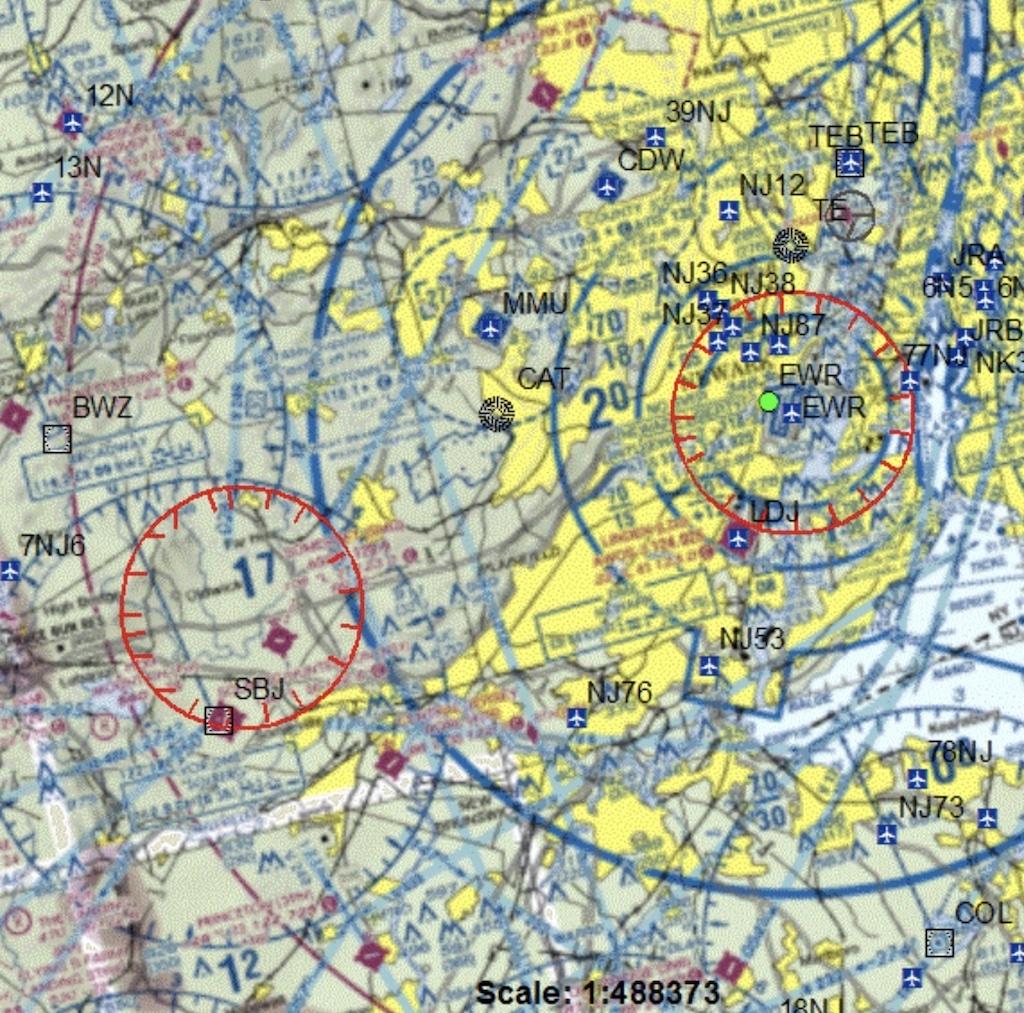
This TFR over Bedminster, New Jersey, was established for the protection of VIP movement. Due to a change in the former president’s schedule, the timing of the NOTAM was altered.
The U.S. election season is certainly going to affect air traffic movement this fall.
The size and location of temporary flight restrictions (TFR) enacted during movements of presidential candidates can have a large impact on business and general aviation. The dimensions and timing for each TFR will vary depending on threat assessments by the U.S. Secret Service in coordination with the FAA.
For example, a TFR went into effect over Wilmington, Delaware, “immediately” on Aug. 2, 2024, at 2208 UTC and was scheduled to last until Aug. 5 at 1730 UTC due to VIP movement. The FAA’s Graphic TFR webpage listed the inner core as having a 12-nm (14-mi.) radius and extending from the surface up to 17,999 ft.
All aircraft operations within this inner core were prohibited except for approved law enforcement, military aircraft directly supporting the Secret Service and the Office of the President, approved air ambulance flights and regularly scheduled commercial passenger and all-cargo carriers operating under Transportation Security Administration (TSA)-approved security programs.
The outer ring of the TFR had a 28-nm radius and limited operations to aircraft arriving or departing local airfields, provided the aircraft were on an active instrument flight rules or visual flight rules flight plan with a discrete code assigned by air traffic control (ATC). Pilots had to remain in two-way communications with ATC.
A wide range of general aviation flight activities were prohibited in the outer ring. This included flight training, sightseeing, parachuting, banner towing, model aircraft operations, model rocketry, glider and balloon flying, hang gliders, ultralights and uncrewed aircraft systems.
The TFR did allow for limited flight operations that would comply with security screening by the TSA at a gateway airport prior to arriving or departing Wilmington Airport (KILG), Delaware. Aircraft operators were required to register with the TSA for gateway screening no less than 24 hr. prior to their scheduled departure time.
Gateway screening included ID verification and vetting of all pilots, crew and passengers, screening of persons and baggage, and inspection of the aircraft. No firearms were allowed, nor were gift-wrapped packages. Eligible gateway airports created for the TFR included KILG, Lehigh Valley International Airport in Pennsylvania and Washington Dulles International Airport in Virginia. On departure from a gateway airport, aircraft were required to maintain radio contact with ATC, continuously squawk an ATC-assigned discrete code and refrain from intermediate stops while en route.
Teterboro Airport ‘Cut Out’
The establishment of a presidential TFR can be especially challenging when it occurs over New York City as the inner ring would likely cover Teterboro Airport (TEB) in New Jersey. In this case, there is a “cut-out” that allows operations at TEB. Be advised: The cut-out will be limited in size and eliminate the availability of some approaches and departures.
The FAA also is authorized to establish TFRs for VIPs who are not directly related to the current president or vice president. This list would include papal visits, president-elects and presidential candidates. The Secret Service can also ask for additional airspace protection.
Where To Find TFRs
It is important for pilots to check NOTAMs thoroughly before every flight. As illustrated in the opening example of this article, TFRs can pop up and change with barely any notice. Pilots trying to find official sources for TFR information can visit the FAA’s graphic TFR webpage. The agency recommends that all aircraft operators check NOTAMS frequently for possible changes to TFRs prior to flights within the region.
For example, a VIP NOTAM was established over Bedminster, New Jersey, on Aug. 3. Due to a change in the former president’s schedule, the timing of the NOTAM was altered.
The complexity of TFR NOTAMs can be difficult to understand. Fortunately, the National Business Aviation Association (NBAA) notifies its members of VIP and special-event TFRs using plain-language descriptions of the impact. Its air traffic management specialists provide information on the dimensions of the TFR, the times in which the TFR is in effect, which airports are impacted and additional guidance.
Notifications are available on the NBAA’s VIP TFR Impact Statement web page and through the association’s Airspace Alerts Air Mail list.
To read “How Election Season Affects Business Aviation, Part 1,” click here.





